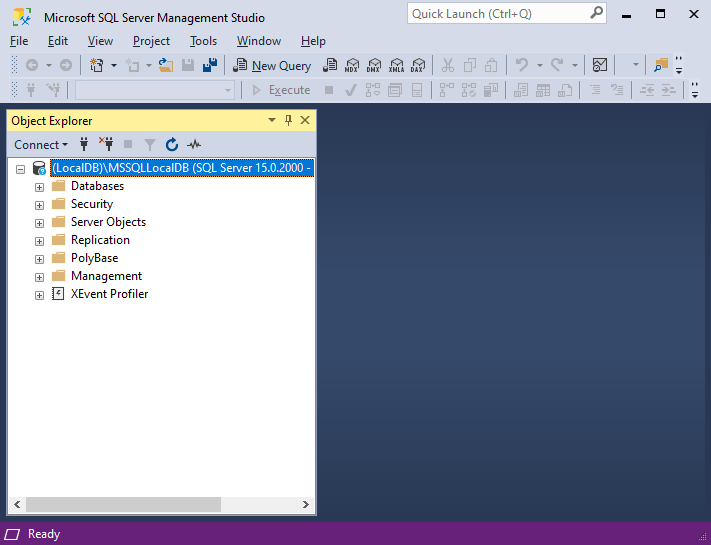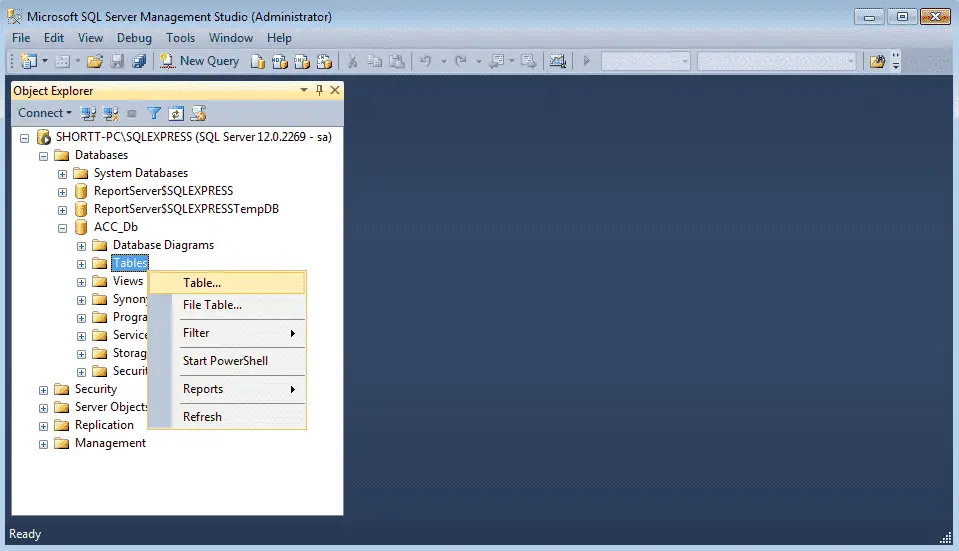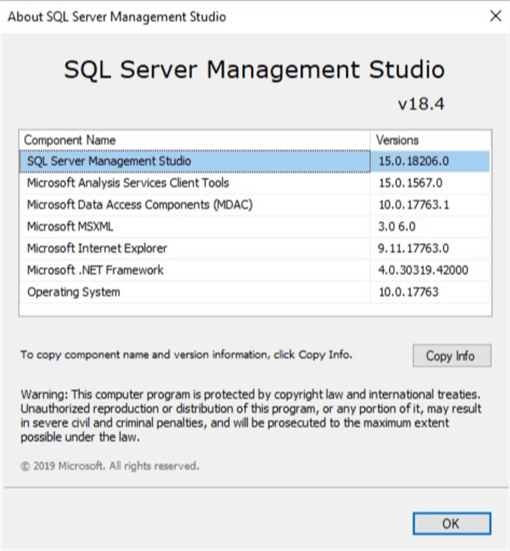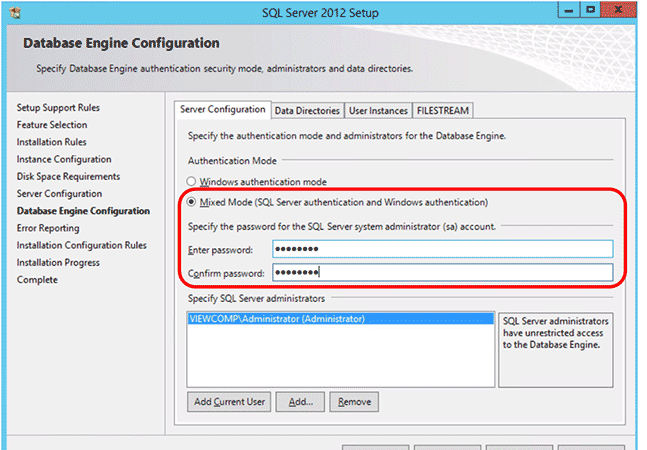

- Creating a database in sql server management studio 17 install#
- Creating a database in sql server management studio 17 full#
- Creating a database in sql server management studio 17 software#
- Creating a database in sql server management studio 17 license#
- Creating a database in sql server management studio 17 free#
Step 12 − Select Database engine services checkbox and click Next. Step 11 − Select SQL Server feature installation option and click Next.
Creating a database in sql server management studio 17 license#
Step 10 − Select the checkbox to accept the license option and click Next. Step 9 − Make sure to check the product key selection and click Next. Step 8 − Click Next to get the following screen. Step 7 − Click OK and the following screen pops up. Step 6 − Click the first option of the right side seen on the above screen. Step 5 − Click Installation which is on the left side of the above screen. Step 4 − Once we click on 'setup' application, the following screen will open. Step 3 − Click the “SQLFULL_x86_ENU” or “SQLFULL_圆4_ENU_Install.exe” folder and double-click “SETUP” application.įor understanding, here we have used SQLFULL_圆4_ENU_Install.exe software. Step 2 − Double-click the “SQLFULL_x86_ENU_Install.exe” or “SQLFULL_圆4_ENU_Install.exe”, it will extract the required files for installation in the“SQLFULL_x86_ENU” or “SQLFULL_x86_ENU” folder respectively.
Creating a database in sql server management studio 17 software#
Once the software is downloaded, the following files will be available based on your download (32 or 64 bit) option. Step 1 − Download the Evaluation Edition from

Service accounts for database engine, agent, SSAS, SSIS, SSRS, if any.

Creating a database in sql server management studio 17 install#
This edition has a built-in expiry of 6 months from the time that you install it.
Creating a database in sql server management studio 17 free#
This edition includes all the features in the Standard edition and support for advanced BI features such as Power View and PowerPivot, but it lacks support for advanced availability features like AlwaysOn Availability Groups and other online operations.Įnterprise Evaluation − The SQL Server Evaluation Edition is a great way to get a fully functional and free instance of SQL Server for learning and developing solutions. The Datacenter edition has no memory limitation and offers support for more than 25 instances.īusiness Intelligence − Business Intelligence Edition is a new introduction in SQL Server 2012. The maximum size of the database is 4 GB.ĭatacenter − The major change in new SQL Server 2008 R2 is Datacenter Edition. It can utilize only 1 CPU and 1 GB memory, the maximum size of the database is 10 GB.Ĭompact − This is free embedded database for mobile application development.

It can be easily upgraded to Enterprise without reinstallation.Įxpress − This is free entry level database. Web − This is designed for web applications.ĭeveloper − This is similar to Enterprise, but licensed to only one user for development, testing and demo. Workgroup − This is suitable for remote offices of a larger company. Standard − This has less features than Enterprise, when there is no requirement of advanced features.
Creating a database in sql server management studio 17 full#
This chapter lists the multiple editions with its features.Įnterprise − This is the top-end edition with a full feature set. SQL Server is available in various editions.


 0 kommentar(er)
0 kommentar(er)
